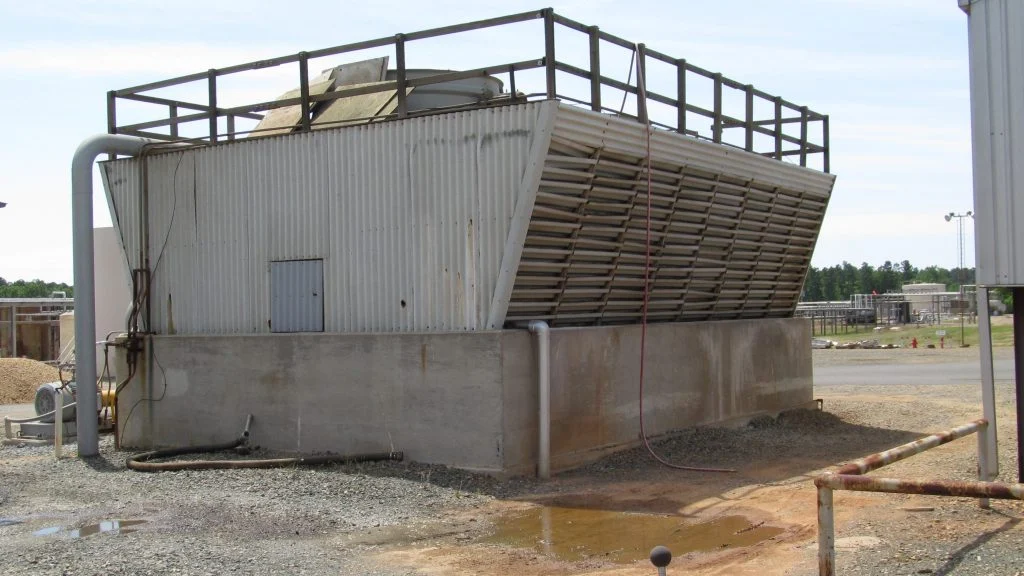Introduction
Basin or Water Basin commonly located at the base of a cooling tower, plays a vital role in the system’s overall functionality. Acting as a reservoir, it collects cooled water after heat dissipation, ensuring an uninterrupted supply for recirculation through the cooling process. Built using robust materials like concrete, galvanized steel, or fiberglass, the basin is designed to handle the challenges of continuous operation, including exposure to varying temperatures, water pressure, and environmental factors. Properly engineered with drainage and overflow mechanisms, the water basin supports efficient system operation by managing water levels, preventing water loss, and facilitating maintenance.
Key Features of Basin or Water Basin
Material
- Concrete: Often used for larger cooling towers due to its strength and long-term durability. Concrete basins are resistant to wear and can withstand harsh environmental conditions.
- Galvanized Steel: Common in smaller or modular towers, it offers a lightweight and corrosion-resistant option, especially when coated for protection against rust.
- Fiberglass: Increasingly popular for its high resistance to corrosion, lightweight nature, and low maintenance requirements, fiberglass is ideal for environments with aggressive chemicals or saltwater exposure.
Capacity
- The basin is designed to hold enough water to account for operational needs, including recirculation and evaporation losses.
- The capacity must also ensure sufficient water during peak cooling demands while preventing overflow during heavy rain or high system input.
Drainage
- Includes strategically placed drain lines to allow for easy removal of excess water during maintenance or heavy rainfall.
- Equipped with overflow systems that prevent spillage or flooding, ensuring a stable water level during operations.
- Sediment drains are also included in many basins to allow easy removal of debris and sediment that might accumulate over time.
Functions
Collection of Water
- The basin collects the cooled water that trickles down from the cooling tower fill.
- It ensures that water exiting the cooling process is ready for recirculation without loss or spillage.
Supply to Pumps
- Acts as a reservoir feeding water to the pumps that push it back into the heat exchange system for further cooling cycles.
- The design ensures minimal air entrapment or water flow issues to protect pump performance and longevity.
Dissipate Heat
- Some residual heat in the water is naturally dissipated in the basin before it is pumped back into the system.
- This passive cooling effect enhances the overall efficiency of the cooling process.
Maintenance Tips on Basin or Water Basin
Regular Cleaning
- Prevents algae growth, sediment buildup, and scaling, which can affect water quality and system performance.
- Cleaning should include removing debris, sediment, and biological contaminants using specialized cleaners or manual methods.
Check for Leaks
- Inspect the basin regularly for cracks or structural issues, especially in concrete basins.
- Seal any leaks immediately to prevent water loss and potential structural damage.
Ensure Proper Water Levels
- Monitor water levels to ensure the basin is neither too full (causing overflow) nor too low (leading to pump inefficiency and potential air ingress).
- Use automatic water level controllers where possible to maintain optimal levels.
Inspect Overflow and Drainage Mechanisms
- Ensure the overflow pipe and drains are not clogged to prevent flooding during heavy rainfall or abnormal system operation.
- Check sediment drains and clear them to maintain water flow efficiency.
Applications
HVAC Systems
- Used in large commercial buildings to maintain cool temperatures. The basin supports efficient circulation in air conditioning systems.
Power Plants
- Essential for removing waste heat from turbines and generators, ensuring smooth and uninterrupted power generation.
Manufacturing Facilities
- Cooling water is required in many processes like chemical production, metal fabrication, and food processing. The basin ensures efficient water recirculation to meet cooling demands.
Petrochemical Industry
- Plays a role in cooling lubricants and refining operations, ensuring process stability and safety.
Steel and Cement Plants
- Ensures proper cooling of hydraulic systems, compressors, and other heat-producing machinery.
Conclusion
water basin is not merely a structural component but a critical element that determines the efficiency and reliability of a cooling tower. By collecting and storing cooled water, it ensures a continuous and stable flow to the system, enabling optimal thermal management in diverse applications. Its design and material choice enhance durability and resistance to operational stress, while features like drainage systems and overflow controls ensure safe and efficient functioning. Regular maintenance, such as cleaning to prevent sediment buildup and monitoring for leaks or structural damage, is essential for long-term performance. A well-maintained water basin minimizes operational disruptions, reduces water loss, and improves the cooling tower’s overall efficiency, proving its indispensable role in modern industrial and commercial cooling systems.

